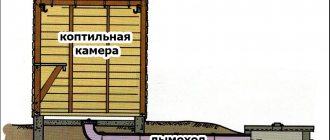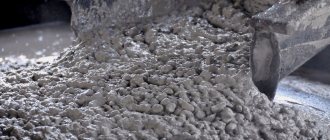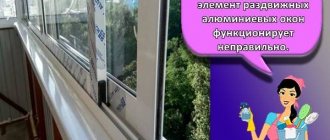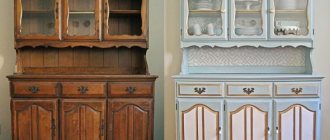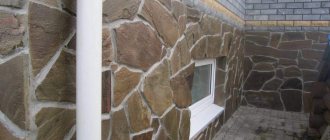30% discount until January 29 Call (985) 991-28-10
- home
- Types of stained glass
»
There are quite a few different stained glass techniques, let's study each of them in more detail.
- Contour stained glass
- Filled stained glass windows
- Lacquer stained glass windows
- Tiffany stained glass
- Film stained glass
- Stained glass with photo printing, photo stained glass (printing on glass, photo printing, UV printing)
- Sandblasting stained glass (artistic matting / artistic sandblasting / engraving)
- Faceted stained glass windows
- Fusing (glass sintering)
- Classic (stacked) stained glass
- Glass painting
- Art mosaic
- Artistic bending
- Combined stained glass
- 3D Stained Glass
- Stained glass painting
- Matting
- Glass tile
- Cabochon
- Etching
- Bending
- Pattern "Frost"
- Shebeke (Panjara)
- Erklez
In the modern world there are many different types of stained glass. Their production is a labor-intensive process that requires special skills and knowledge. If you want to add elegance to your interior, pay attention to stained glass windows. Choose from a large number of stained glass techniques, the one you like. Types of stained glass windows amaze with their diversity of both manufacturing techniques and materials.
Tiffany stained glass
This is a technique based on the selection of colors and shades. Tiffany stained glass windows are made as follows:
1. The size is determined and a sketch is developed.
2. The color scheme is selected. This stage is the most important and requires special care. Glass conveys its true color only under special lighting and no photograph can demonstrate it.
3. The glass is cut into pieces, and each piece is ground and adjusted.
4. The fragments are treated around the perimeter with foil and degreased.
5. Then they are laid out on a pre-made matrix and soldered together with lead-tin solder. To give a tint to the solder, it must be covered with a patina, most often black or brown is used.
6. The stained glass window is framed for installation.
Styles and techniques
There are many styles of stained glass, because stained glass itself dates back to the Middle Ages. Over time, it changed, reflecting the cultures of different countries and eras; the emergence of new techniques made it possible to diversify the materials used. Nowadays, several styles are used to decorate rooms.
- Classical. Assumes a symmetrical design, floral motifs or geometric pattern. Made in warm, pastel colors. Suitable for classic interiors with clear lines and good quality, heavy furniture.
- Gothic. This is the style of Catholic churches of medieval Europe. Twilight, upward direction of narrow lancet windows and high towers with spiers, dark red, scarlet, gold, green, blue, purple colors. It uses religious motifs or scenes from the life of medieval knights, castles, exploits, dragons, unicorns. Gothic stained glass will give the space a touch of mystery and fabulousness. It was during the Middle Ages that the most famous stained glass windows, recognized as masterpieces, were created.
Stained glass in Gothic style - a fairy tale and mystery in your home
- Modern. Perhaps a universal style for any interior. The main motives of this style are nautical, the idea is the priority of form over content. This style is characterized by smooth, fancy lines, one way or another repeating the shape of a sea wave, grace, and sophistication. Pale, muted colors, halftones, blue-green tones. Art Nouveau goes well with modern technology and goes well with a high-tech interior.
Stained glass in Art Nouveau style is appropriate in any interior
- Abstract. Involves a geometric pattern and bright, cheerful colors. Does not conflict with almost any interior, except for the most orthodox one. Brings a special emotionality into the space. In abstract stained glass it is important to maintain a balance between form and color and then it will never get boring, charging you with optimism and encouraging creativity.
Stained glass in an abstract style is suitable for any interior and will never get boring
- Egyptian. Dim paintings in sandy-brown tones. The drawing reproduces Egyptian hieroglyphs, gods, pharaohs and scenes from their lives.
- Antique. The paintings resemble antique mosaics with ancient Greek scenes. Characterized by the presence of many small details. Suitable for rooms in a minimalist style.
Stained glass in an antique style is often a finished product
- Byzantine. It is distinguished by the use of not only colored, but also transparent glass, which makes the image seem to be hanging in the air. Such stained glass windows resemble glass painting and are suitable for rooms filled with light.
The use of transparent glass in the Byzantine style creates the illusion of the design floating in the air
- Vanguard. The subject of the drawing can be anything. But thanks to modern execution techniques, it is given a sense of volume. The image is multi-layered, with three-dimensional details, on transparent or frosted glass, glossy, shining. This stained glass window sets the tone for the entire room and makes it trendy.
Stained glass in an avant-garde style can contain voluminous details
Stained glass in the interior creates a powerful accent, so it is important not to make a mistake when choosing a style. It should be in harmony with the overall style of the room or set it. Then the rest of the interior items will complement and play with it without creating dissonance.
You can decorate any glass or mirror surface with stained glass. This will give the interior uniqueness, originality and a feeling of luxury. It is appropriate to place a stained glass window in any room.
Where to place stained glass in an apartment
- Window. Stained glass will give the bedroom a feeling of coziness, and the nursery - a fabulous feel. Stained glass in a window can be used as protection from the sun, hide the bathroom from prying eyes, and add festiveness and comfort to the kitchen.
A floral pattern on the balcony window will create the illusion of a country house
- Doors. You can decorate both fully glass doors and glass inserts. It is better to do the drawing in the same style on all doors.
It is better to keep the pattern on all doors in the same style
- False windows. This glass picture is backlit and is often installed in bathrooms or on staircases.
A stained glass window will help avoid the feeling of a closed space and additionally decorate the room
- Ceiling lamps. Large glass shades or acrylic inserts in the ceiling will add originality to the interior.
The Gothic interior will be decorated with a stained glass ceiling
- Glass partitions. They can be transparent or matte. Such partitions are often installed between the kitchen and the bathroom or the toilet and the bathroom. Stained glass allows light to pass through, but does not allow you to see what is happening behind it.
Stained glass is a good solution for zoning a room
- Furniture fronts, glass countertops. Decorating furniture with stained glass is a good way to give it personality. Even old furniture decorated with stained glass looks expensive and luxurious.
Stained glass inserts are appropriate for both living room and kitchen furniture
Some tips for choosing a pattern
- As already mentioned, the plot of the drawing should correspond to the general style and atmosphere of the room.
- Dark tones and horizontal lines are suitable for spacious rooms with high ceilings; they visually reduce the space.
Dark tones of stained glass create an atmosphere of mystery, but visually reduce the space
- Stained glass on a mirror is a good choice for small spaces. It will create a perspective of space and visually enlarge the room.
Stained glass on the mirror will create a sense of perspective and expand a small room
- The abundance of bright colors and colorful images can become boring over time. Take this into account when choosing an ornament.
- For the bedroom and nursery, it is better to choose calm, light colors that are conducive to relaxation.
For the bedroom it is better to prefer calm tones
- It is appropriate to decorate the kitchen with a landscape or still life, and the bathroom with a marine theme.
Scenes with fish are suitable for the bathroom
But not every stained glass window can be done independently. There are several types of execution techniques.
Types of equipment
- Classic or typesetting. The most complex and ancient technique. Colored glass fragments are inserted into metal frames, assembled into a pattern and soldered. The technique requires special tools and skills. Used for large structures and only by professionals.
Stained glass using the classic technique is indispensable for large areas
- English or film. The pattern is formed on glass from stained glass self-adhesive film. Each fragment is cut out separately and glued to the place determined by the stencil. The pasted fragments are framed with lead tape. With certain skills, you can make such a stained glass window yourself.
- Fusing. Stained glass is made without a metal frame by sintering multi-colored fragments into a monolithic pattern. It is impossible to make such a stained glass window at home; a special oven with a high temperature is required.
Stained glass using the fusing technique amazes with the brightness of colors and integrity of the composition
- Tiffany. This technique is similar to the classical one. Pattern fragments are cut out of colored glass and bordered with copper tape. The finished elements are assembled into a pattern and soldered together. This technique is difficult for beginners, but it can be mastered and used at home.
Stained glass using the Tiffany technique successfully replaces the classical technique
- Sandblasting. It involves processing glass using a stencil with sand supplied under high pressure. The treated areas become matte, and the pattern becomes airy. It cannot be used at home; it requires special equipment.
- Cast. Each element is cast or blown from glass separately. After this, the fragments are assembled into a picture using reinforcement or mortars. Not used at home.
- Etching. By etching glass with hydrofluoric acid, deep relief patterns are created. Using this strong acid at home is hazardous to health.
- Painted stained glass window. The pattern is copied onto the glass and outlined. After the contour of the void has dried, it is painted with stained glass paints.
Using the painted technique you can create real paintings
- Contour filler. As with the painted technique, the outline of the design is first prepared. After it dries, the voids are filled with a thick layer of paint. If necessary, the paint is leveled with a brush or wooden stick.
The pouring technique most successfully imitates classical styles
Video: making English film stained glass with your own hands
Painted stained glass and contour pouring techniques are the most accessible for self-production. They do not require special knowledge, materials or tools, and can imitate almost any other technique. To make such stained glass windows you only need special paints, accuracy and patience.
Video: do-it-yourself stained glass using the Tiffany technique
Photo stained glass (glass printing, photo printing, UV printing)
Three types of photo stained glass techniques
1. Direct
Printing is carried out on any glass surface using a special printer. To make such photo stained glass, special paints are used that are well absorbed into the glass under the influence of ultraviolet rays or high temperatures.
2. Film
Drawing an image onto a transparent film and then gluing it onto the glass.
3. Triplex
An analogue of the film method, but the pattern is placed between two sheets of glass.
Film stained glass
This is the least expensive way to make stained glass.
Making stained glass using film technology:
1. The drawing is approved.
2. The glass surface is degreased.
3. Parts of the selected image are cut from films of various colors.
4. The film is moistened with water and rolled out with a special rubber roller, which allows you to remove excess water. Gaps are left.
5. Bevels are glued to the gaps using ultraviolet glue. At the last stage, the image is fixed with lead tape running along the bevels. The tape is coated with an oxidizing liquid to give it the appropriate shade.
Requirements for stained glass glazing of facades
The requirements for stained glass glazing of facades, in fact, do not differ from those for other facade systems. There is no single regulatory document that would contain their list and description. However, with some degree of convention, they can be divided into the following groups:
- wishes of customers. The most diverse category of requirements, which is limited only by the imagination and taste preferences of the customer;
- requirements of designers and architects. In most cases, they are reflected in the relevant design and estimate documentation and largely depend on the customer and existing regulatory and technical documents;
- requirements of current standards (all-Russian and regional). At the moment, there is no single document or legal act that would clearly regulate the requirements for facade systems. They are contained in a variety of documents in fragments - somewhere they describe the requirements for thermal insulation characteristics, somewhere - for the lighting of premises, somewhere - for ensuring fire safety, etc.
It should be noted that existing SNiPs for glazing practically do not contain descriptions of modern materials and designs used in stained glass glazing. Until a new SNiP or GOST is developed, special attention should be paid to the compliance of the systems used with the design parameters, as well as to the availability of quality certificates from the company supplying the structures.
Sandblasting stained glass windows
Sandblasting stained glass windows are made using air flow and sand. They come in several types:
1. Artistic matting is a technique of applying an image using compressed air and the impact of a special liquid containing metal abrasive particles on a pre-prepared template.
2. Artistic sandblasting - processing with a powerful stream of air-sand mixture with the addition of dyes.
3. Engraving is the application of an image with a large stream of air and sand. The force of the flow is regulated and due to this the depth of the slot varies and sculptural, three-dimensional images are created.
Faceted stained glass windows
This type of stained glass is made as follows:
1. A chamfer is removed along the perimeter of the glass.
2. After removal, it is sanded until matte.
3. The part is polished and becomes completely transparent.
4. To enhance the refraction of rays, the chamfer is made wider.
5. Faceted stained glass windows are inserted into a brass or copper frame, which adds solemnity.
Filled (contour) stained glass windows
This type of technique involves creating a drawing by hand.
1. A drawing is selected and transferred to paper in full size. At the same time, colors are signed on the sketch.
2. The surface of the glass is degreased.
3. Using polymer paint, the outline of the design is applied to the glass under which the sketch is located. It will serve as a barrier.
4. After the contour has completely dried, the elements are filled with paints or varnish.
5. Finished flooded (contour) stained glass windows are allowed to be installed only after 24 hours - this time is allotted so that they can dry well.
Making stained glass: step-by-step instructions
- Place the glass on the prepared stencil so that their edges coincide.
- Thoroughly degrease the glass with alcohol, acetone or vinegar. Dry the surface with a dry, lint-free cloth.
- Transfer the outlines of the design from the stencil onto the glass with a special disappearing marker. If you have experience in drawing, the lines can be applied directly with a contour or contour paste.
Drawing a contour requires accuracy and a precise eye.
- Let the outline dry, otherwise the drawing will smudge.
- Now all that remains is to fill the voids of the drawing with paints. This is done with a thin brush or straight from the tube. Tubes of ready-made paints are equipped with a convenient spout.
Paints are applied to stained glass with a brush or using a tube attachment.
- Paint is applied from the edges to the center. It’s okay if paint gets on the outline while working—touch it up with a wooden stick or toothpick. After drying, special paints become transparent and the outline appears through them.
- If the design involves color transitions, lighter or darker tones are applied after the base ones. They can be mixed or shaded with the main ones using a toothpick.
- Bubbles formed during the work are also removed using a toothpick.
- Let the finished painting dry completely. Some paints require additional coating with nitro varnish, please pay attention to this. This information is indicated on the packaging.
- All that remains is to insert the stained glass into the frame.
Stained glass can be inserted into the frame
To protect yourself from cuts, you can first cover the edges of the glass with masking tape before work.
Video: master class on making stained glass using poured technique
Having mastered the painted and poured techniques, you can try yourself in the English film or fusion technique. This will require a lot of expense, materials and skills, but it's worth it.
Fusing (glass sintering)
A unique technique in which a pattern is created either by baking pieces of glass of different colors and sizes at the same time, or by baking objects into glass. For example, it could be a wire.
Process steps:
1. Colored glass is cut out according to the outline of the design.
2. They are laid out on the base - most often this role is played by transparent glass.
3. The workpiece is placed in the oven. Under the influence of high temperature, the glasses are baked to each other.
Stained glass glazing of cottages
The variety of opportunities provided by the use of stained glass glazing has led to the fact that it is increasingly used in private housing construction, in the construction of country houses and cottages.
The systems under consideration are especially popular in cases where construction is not carried out according to a standard design, but using a variety of original architectural and design solutions. It is in such cases that the advantages of stained glass glazing can manifest themselves especially clearly.
Rice. 25. Stained glass glazing of the cottage.
It is most often used:
- when performing stained glass glazing of a cottage facade;
- when decorating a winter garden and similar small rooms or structures. This type of structure also includes various gazebos, pavilions and terraces that are built on the territory of a suburban area. The use of stained glass allows not only to give them an attractive appearance, but also reliably protects them from precipitation and wind;
- to create a single harmonious exterior design that seamlessly includes window and door designs.
Currently, a variety of stained glass glazing systems are increasingly being included by designers and architects in the designs of small country houses and cottages, which indicates that stained glass glazing will be used more and more often.
Classic (stacked) stained glass
This technique is one of the easiest to produce stained glass. Classic stained glass is made on a typesetting table from glass fragments that are cut in advance. This type of technique is used in the manufacture of stained glass windows that do not contain painting.
Several assembly methods are used:
1. The mosaic pieces are assembled directly onto a pre-prepared metal structure.
2. The fragments are laid out on a sheet of glass and glued to it.
How to create a stained glass window with your own hands
For a creative person, it will not be difficult to change the interior with the help of stained glass windows. In order for a stained glass window to transform even old and gloomy furniture, we will try to select bright transparent glass and focus on the proven Tiffany technique. A novice craftsman will need skills in working with glass and a little imagination.
What you need to create a stained glass window
Stained glass made from multi-colored glass is resistant to temperature changes and mechanical stress. At the preparatory stage, select a drawing. The picture that needs to be transferred on glass should be simple for a beginning stained glass artist. It’s better to stick to geometric patterns with the maximum number of straight lines.
For work you will need the following materials:
- copper film 5-6 mm wide for gluing stained glass on sections;
- sheets of colored glass 4-5 mm thick;
- soldering flux;
- solder (tin-lead wire).
You also need the following tools:
- glass cutter;
- forceps;
- diamond-coated file or grinder;
- soldering iron 75 V;
- marker.
Tools for creating stained glass: Pixabay
To ensure a bright picture and a reliable window design, choose the right glass for stained glass. Colored transparent glass, which allows light to pass through from outside, is popular. Although the colors can be rich and bright.
3D Stained Glass
This is the latest technique for creating stained glass, creating the illusion of a three-dimensional image.
Manufacturing:
1. A sketch is selected and pieces of glass are cut.
2. Each piece is processed: cutting off irregularities and turning chips.
3. All glass particles are joined into a whole image using brass solder.
4. Next, the painting is placed between two sheets of glass - this provides the desired effect and strength.
5. The workpiece is placed in an oven and heated at a temperature of 850 degrees. Production time is 10 minutes. When the workpiece has cooled, it is wrapped in aluminum tape and filled with rubber in liquid form.
Disadvantages of stained glass glazing
No building material or design is without its drawbacks. They are also available for stained glass windows. The main ones are the following:
- relatively high cost of materials and work. Despite the fact that, thanks to modern developments, the cost of the system has decreased somewhat in recent years, it is still used mainly in commercial facilities and where the customer is willing to invest significant financial resources to achieve convenience, comfort and an attractive appearance. type;
- the impossibility of creating non-flat curved surfaces, for example, spherical ones, due to the insufficient strength of the aluminum profile;
- instability of the stained glass glazing system under high wind loads, as well as in areas with seismic activity. This drawback seriously limits the use of the system in question in high-rise buildings, where it may be subject to increased wind loads. It is also not allowed to use panoramic glazing in seismically active regions, but there are relatively few such places;
- difficulty in cleaning the façade from the outside. Large glasses that act as an enclosing structure for stained glass windows cannot be washed from the inside. Therefore, we have to do it outside, which is quite problematic. The problem is aggravated when there are several floors - in this case, the invitation of industrial climbers or the use of lifting equipment is required.
The listed disadvantages of panoramic glazing are not so significant as to prevent its increasingly widespread use.
Rice. 10. Washing stained glass.
Etching
A technique based on the interaction of hydrofluoric acid with one of the glass elements, namely silicon dioxide. A protective stencil is used that allows you to create a design. Etched stained glass is three-dimensional drawings, the relief of which is noticeable on the glass.
Manufacturing:
1. First, a protective film is applied to the glass.
2. On film - the outline of the future drawing.
3. Next, the image is melted with acid.
This method requires special care because the acid corrodes not only glass, but also other surfaces, such as skin, if it comes into contact with it.
Stained glass glazing of balconies and loggias
The expansion of functionality and improvement of basic performance characteristics, which occurred thanks to the use of modern technologies in the production of stained glass systems, made it possible to use them in the glazing of balconies and loggias. This was also facilitated by the fact that the price of stained glass glazing is becoming more and more affordable over time.
The use of stained glass glazing for balconies allows you to achieve a number of advantages:
- the ability to perform glazing work on even the largest openings of almost any shape;
- increasing the level of natural light in rooms adjacent to the balcony or loggia;
- improving the appearance of a building on which stained glass glazing of balconies is used;
- the ability to implement various design solutions for the design of a balcony or loggia;
- high maintainability of the system, which is achieved by the possibility of replacing any of its elements.
The disadvantages of using the design in question include:
- the need for careful adherence to installation technology;
- difficulty in cleaning glass from the outside;
- free view, which is accessible not only to the owner of the apartment, but also from the outside.
The use of modern stained glass systems allows you to get rid of most of the shortcomings or reduce them to a minimum.
Rice. 24. Option for frameless glazing of a balcony.
Pattern "Frost"
This technique is performed in several stages:
1. The most difficult stage is preparing the surface; it must be scratched, etched or rubbed with an abrasive metal.
2. Apply wood glue or gelatin.
3. Place in oven.
4. Allow the glue to dry so that it shrinks and pulls out thin pieces of glass.
Stained glass made using this technique resembles frosty patterns on the window.
Shebeke (Panjara)
This is a three-dimensional lattice, which is most often cut out of stone or wood, thereby forming a window frame. It uses colored glass.
